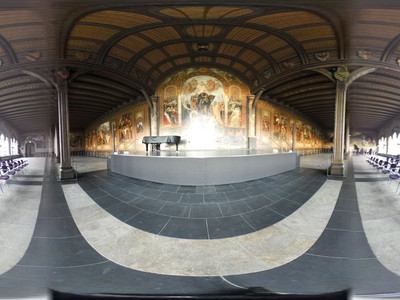The status of Goslar Palatinate as an important part of the German Empire was secured for over 150 years by the German kings' fondness for this town.
Thirteen kings and emperors, including Henry IV (1050-1106), who was born here, Frederick Barbrossa (1122-1256), to William of Holland (1122-1256) have held court here. The Imperial Palace once formed a unique architectural ensemble with the Goslar Cathedral. The cathedral was demolished in 1819, and only the porch of the north portal remains (Domvorhalle), which clearly reflects the sculptural decoration of the whole cathedral. The most important exhibit is the Imperial Chair; the throne of Kings and Emperors and thus the centre of the German Reich. Since the 19th century, paintings have adorned the walls of the hall in the Imperial palace, reflecting the early history to the present. Of all the valuable treasures left here the most symbolic, must be by Heinrich III (1017-1056), who lost his heart to the Harz Mountains. His body was buried at the Speyer Cathedral, but his heart is resting at his request in Goslar in the chapel of St. Ulrich.
